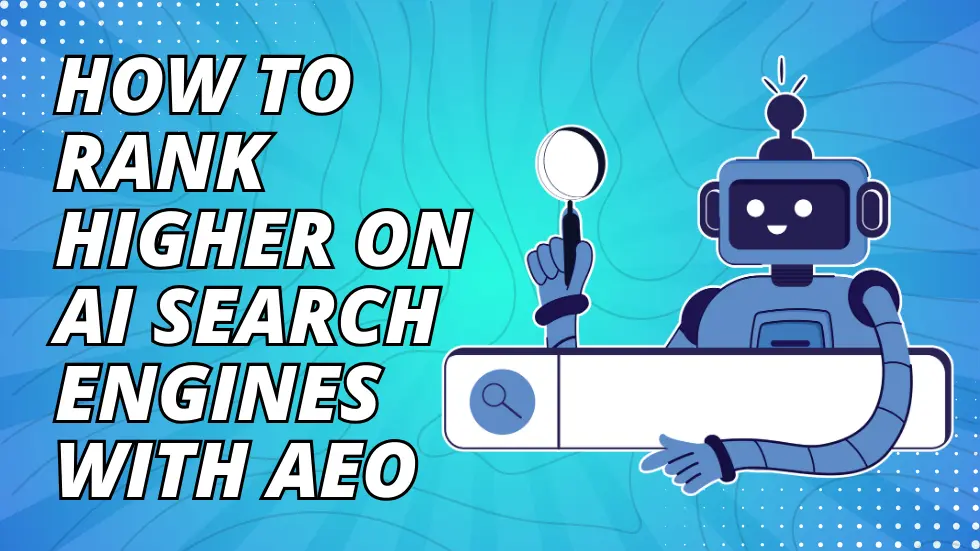AI search is changing the way people find information online. Instead of scrolling through endless search results, users are now getting direct, conversational answers from AI tools like ChatGPT, Google Gemini, and Microsoft Bing Copilot. This shift means businesses and creators need to focus on Answer Engine Optimization (AEO) to stay visible. If your content is not ready for AI search, you risk being left out of the conversation entirely.
What Makes AI Search Different from Traditional Search
Traditional search engines like Google or Bing used to rely heavily on keywords, backlinks, and technical SEO signals to rank web pages. AI search engines work differently. They pull data from multiple sources, understand user intent in natural language, and then deliver concise, clear answers instead of a list of links. The focus is on context, entities, and factual accuracy rather than keyword density alone.
For example, if someone asks, “What’s the best way to improve my website speed?”, AI tools won’t just show ten blue links, they will summarize key points, combine sources, and give a direct, step-by-step guide. This means your content must be structured in a way that AI can easily read, interpret, and use as part of its answer.
What is Answer Engine Optimization?
Answer Engine Optimization is the process of making your content ready for AI search engines so they can feature it in direct answers. Unlike traditional SEO, which focuses on ranking higher in lists of links, AEO aims for visibility inside AI-generated responses.
In simple terms, AEO ensures that when someone asks a question on ChatGPT, Gemini, or Bing Copilot, your content is one of the sources the AI trusts and cites. It combines entity-based SEO, structured data, and best practices for Answer Engine Optimization to help your brand stay visible in AI-driven results.
Best Practices for Answer Engine Optimization
-
Understand User Intent: AI engines are designed to match the exact intent behind a query, not just keywords. Before creating content, think about the questions your audience is asking and how they phrase them.
-
Use Entities to Establish Context: Entities like brand names, industry terms, product models, and location names help AI understand your expertise.
-
Structure Content for Direct Answers: Break your content into short, clear sections. Use bullet points, numbered steps, and concise paragraphs.
-
Add Schema Markup: Schema helps AI engines recognize what each part of your content means, which is a core part of AI visibility solutions and AEO success.
-
Keep Content Updated and Accurate: AI prioritizes trustworthy, up-to-date information.
AI Visibility Solutions Through AEO
If your goal is to appear in AI-generated answers, you need to think beyond traditional SEO. AI visibility solutions involve a combination of structured data, entity optimization, and natural language content. This approach helps AI systems pick your content as a reliable source.
Why This Matters for the Future of Search
AI search engines are moving toward becoming the primary way users find information. As more people rely on tools like ChatGPT, Gemini, and Bing Copilot, the value of traditional search ranking alone will decline. Businesses that adapt early by focusing on AEO will secure long-term visibility, authority, and customer trust.
Final Thoughts
Ranking higher in AI search is not about gaming the system. It is about delivering accurate, clear, and context-rich answers that AI can trust. By applying the best practices for Answer Engine Optimization, and by implementing strong AI visibility solutions, you can ensure your business remains part of the conversation in the era of AI-driven search.
FAQs Around Rank Higher on AI Search Engines
What is Answer Engine Optimization?
Answer Engine Optimization (AEO) is the process of optimizing your content so AI search engines like ChatGPT, Gemini, and Bing Copilot can easily find, understand, and use it in their answers. Unlike traditional SEO, AEO focuses on providing clear, direct responses to user questions.
How is AEO different from SEO?
SEO is designed to help web pages rank higher in search engine results, while AEO is aimed at making content visible in AI-generated answers. SEO relies on keywords, backlinks, and on-page factors, while AEO focuses on entities, structured data, and conversational language.
Why is AEO important for AI visibility?
As AI search tools become more popular, many users may never see traditional search results. AEO ensures your content is chosen as a trusted source within AI-generated summaries, improving brand visibility in this new search environment.
What are the best practices for Answer Engine Optimization?
Some of the best practices include understanding user intent, using recognized entities, structuring content for quick answers, adding schema markup, and keeping your information accurate and updated.
How do AI visibility solutions help my website?
AI visibility solutions combine AEO techniques, structured data, and entity optimization to make sure your content is easily recognized and trusted by AI search engines, increasing your chances of being featured in AI-generated responses.


Recent Comments